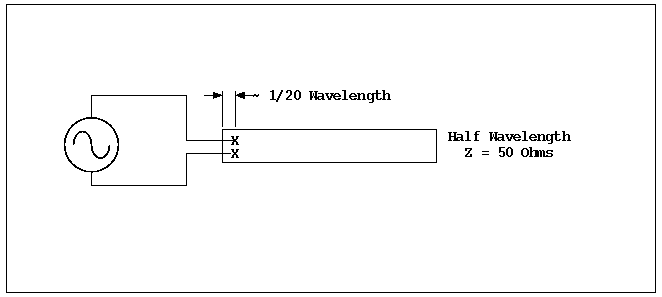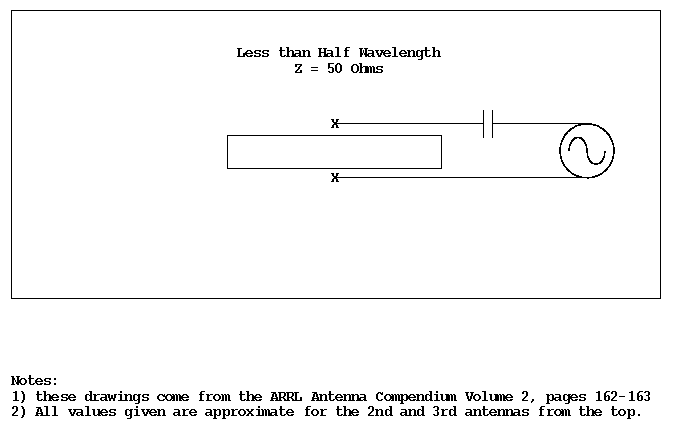Slot Antennas
Attached below is an Excel spreadsheet of the dimensions we used to make the slots that are in the current avionics module.
Found under "slot antenna" in google:
- Very good technical article on the various kinds of slot antennas: http://www.shively.com/choices.html
- Designing a slot antenna: http://reality.sgi.com/192.82.208.21/byee_engr/slot_ant.html
- An actual measured slot antenna: http://www.qsl.net/kd2bd/slot.html
Found under "planar slot antenna":
- Pictures of a Planar Slot Antenna: http://www.acusd.edu/~ekim/ant_proj/
- PDF on designing a planar slot antenna (but no pictures): http://www.imec.be/mcm/pdf/soliman_1999_csp_motl.pdf
Notes: Should we be considering planar slot antennas? Or just slot antennas? It looks like we need some kind of inner conductor, which would be a show stopper It's extremely cool that a single slot gives you omnidirectional coverage Is the outer diameter of the tube related to frequency? If so, another show stopper
You can beam steer! You can beam steer! That's SO cool. But you need multiple slots.
slot.txt - alford slot antennas
~ 200 Ohm impedance, so needs a 4 to 1 balun for matching to 50 Ohm output of transmitter. May be somewhat inductive, so need small cap to tweek for best match. (I think I have suitable caps) (the above relates to a swedish site)
Slot antennas radiate in a manner similar to a dipole, although unlike a conventional dipole, the current circulates (sort of) in a slot antenna. This confirms, as far as I can tell, the thought that a slot antenna is a magnetic radiator rather than an electrostatic radiator, i.e. the B field is used rather than the E field.
Can achieve 50 Ohms without matching circuit if full wave. If less than full wave, then need either off center for half wave, or matching capacitor if less than half wave.
Below are full wavelength figures for the three main bands of interest to us for L.V. #2:
3*10^8 m/s / 900 mhz = ~33 cm = ~13 inches
3*10^8 m/s / 1500 mhz = ~20 cm = ~7.9 inches (futher study shows that the listed frequency is a little low, the actual one is about 1570 MHz. This means the antenna will be shorter than listed.
3*10^8 m/s / 2400 mhz = ~13 cm = ~4.92 inches
Note that these figures are aproximate as to exact length, i.e. if we construct slot antennas we will have to experiment as to length, width, and filling. I have a hunch that filling the slot with fiberglass so as to avoid turbulent drag will not affect the resonant freqency to any substantial degree. (Due to the slot antenna being a magnetic radiator rather than a capacitative one.) If I am wrong in this, then the slot length will be less by a factor of about
sqrt(2.4) = 1.55
which is a significant shortening of the length of the slot. (This presumes that the shortening will behave in a manner much like that of a transmission line, where the square root of the dielectric constant of the insulator is the factor by which the velocity of the traveling wave is reduced.)
In some ways, I think the half-wave slot will work out the best for us, as the off-center location of the RF connection will allow connecting the input such that there will be minimum drag due to minimum horizontal length of the transmission line. Drag is bad, no? Were we to construct full wave antennas, we would need to put the coax connection in the center of the slot which would need a horizontal run of said coax. This might also result in an imbalance and/or increased SWR due to magnetic coupling of the surounding metal into the shield of the Coax.
As far as I can tell, we should be able to construct slot antennas for those frequencies of interest out of material similar in thickness to what the fins are made out of, dial them in, and then transfer them directly to the fins. They **Should** work the same. Note that the two asterisks each side of "Should" indicates that I hope this is true. The reading I have done implies so, but I have never built a slot antenna and so am hedging strenuously.
?DennisYoung - 23 Aug 2001

picture of full wave slot antenna

half wave slot antenna. Note feed at one end.

less than 1/2 wave, requires series matching cap.
I have some more data on slot antennas, this time of the cylindrical species. The vast majority of this inform- ation is in the form of 2 mounstrous (bigger than huge!) drawings.
The first of these is at: http://www.ece.pdx.edu/~dy/slot2.ps
This drawing, as one may discern from the ending, is a postscript file, and requires a postscript viewer. I suggest GV, which is available for the most commonly used platforms. It works well both on Windows (comments censored) and of course variants of Unix. The file which you will (hopefully) find below is a much less detailed version which will, one hopes, whet your apetite for the real article at the above web address.

?DennisYoung - 02 Sep 2001
Attachments: